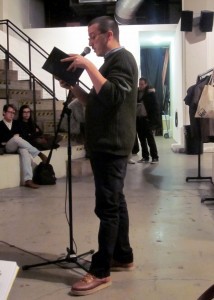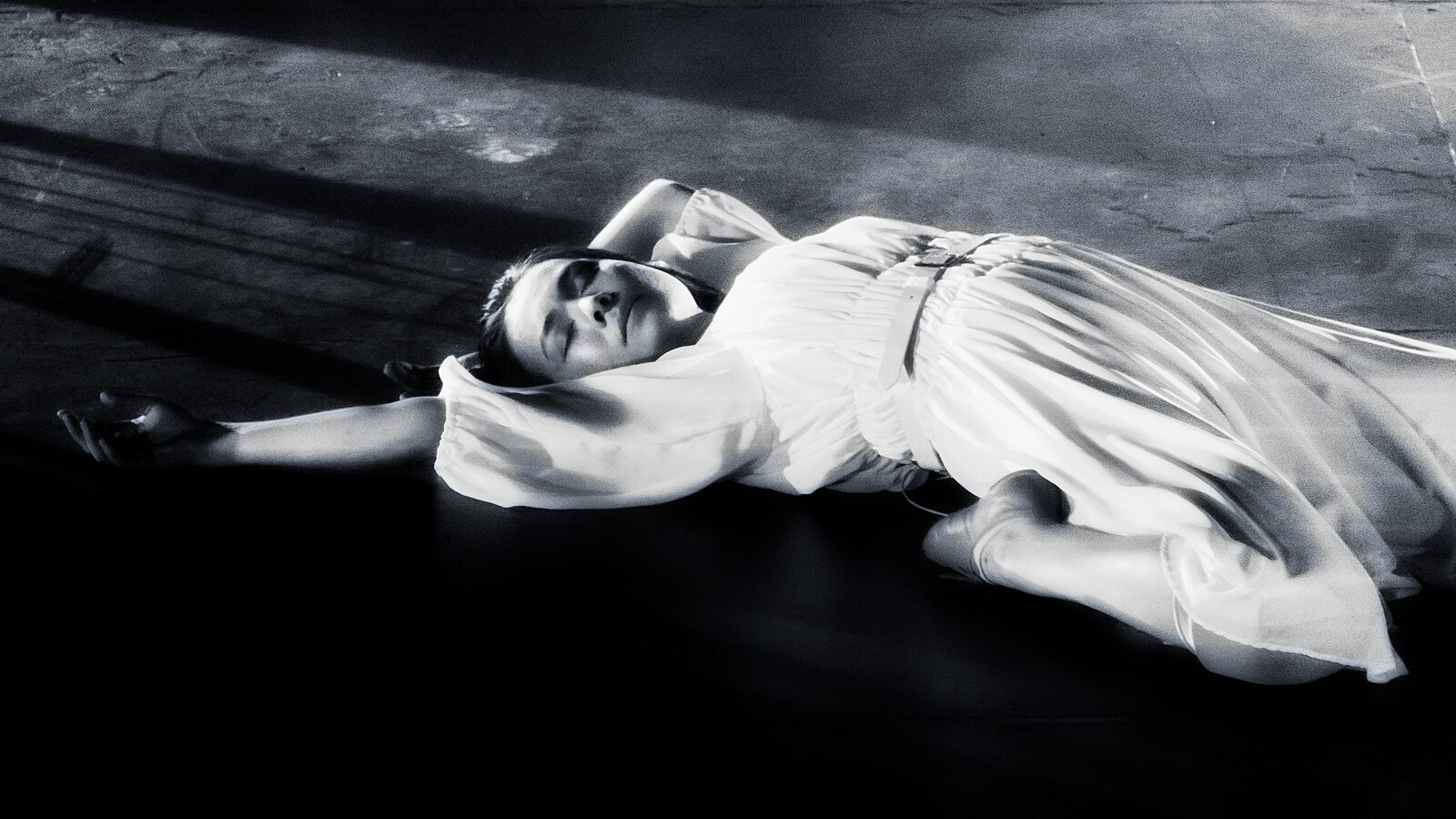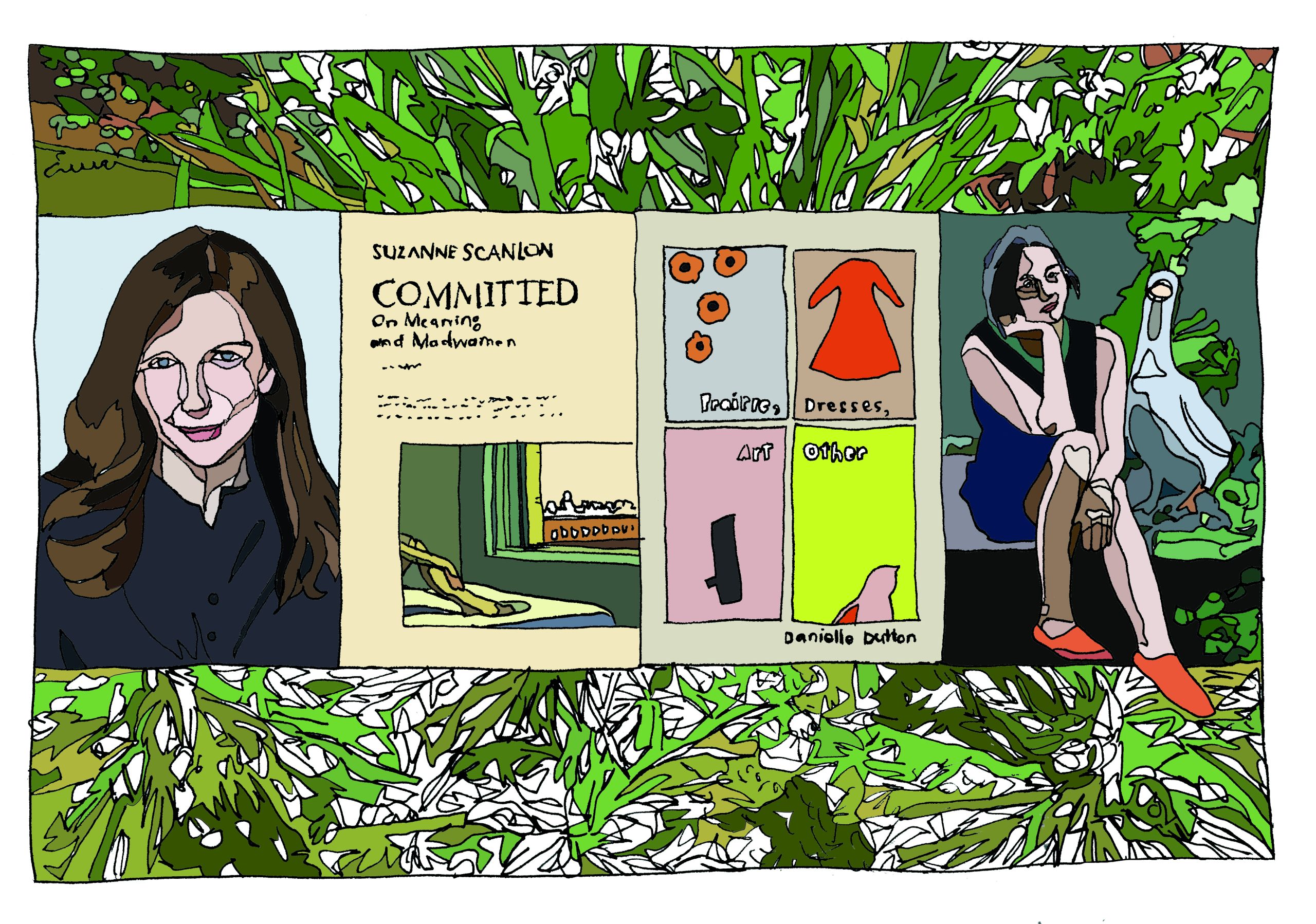news
GUTSY GRRRLS — Women on the Verge at KGB Bar

1. Standard NYC neon sign at night shot. 2. People always look classy at KGB. And communist.
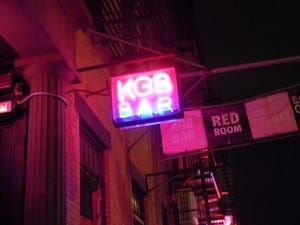
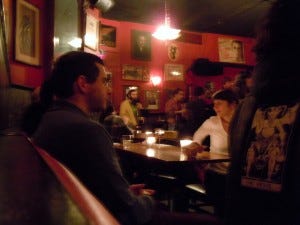
When I arrived at East Village’s KGB Bar a little after 7, I was afraid that I would be stuck in the hallway in front of the bathroom again. Thankfully my friend Stephen and I found two stray bench seats in a corner amidst the perfectly attended room: books on the bar and tables with their well-dressed readers, and not over capacity. Last night, their Sunday Night Fiction series presented “Women on the Verge” — with Kate Zambreno (Green Girl), Helen Phillips (And Yet They Were Happy; Here Where The Sunbeams are Green, which is forthcoming), and Suzanne Scanlon (Her debut novel, Promising Young Women, arrives in October) — and three very awesome fiction writers who practiced a sort of “brinkwomanship” through their characters.
1. Helen Phillips told us we were a “very quiet, gentle audience.” I somehow took this as a compliment. 2. Suzanne Scanlon, indexing. 3. Kate Zambreno in an awesome dress, reading about “hot triangles.”

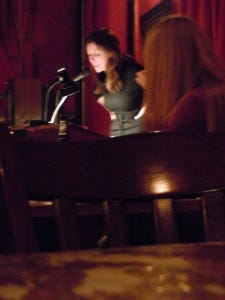
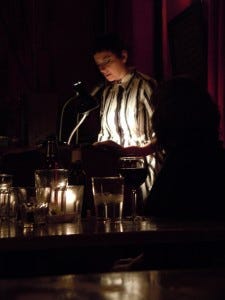
During her introduction, Suzanne Dottino, curator and host of KGB’s Sunday Night Fiction series, wondered herself what these three women were verging on, and it quickly became apparent to me that the three writers were verging on new and important presentations of desire. The first reader, Helen Phillips, read from her debut, And Yet They Were Happy, a novel sewn together with 300 pages worth of 340-word stories. Phillips read five stories, and was “distraught” by how many verging women populated her book. The first story, “Far-Flung Family #4” reminded me of conversations I’d overheard while walking to class at my community college: one “stupid drunk” girl’s revived childhood memory of returning to her mermaid family. “Can you like even believe that? she says.” I wondered if she was from California. Another woman in “We? #5” had a sadness “so enormous she knew [would] kill her if she didn’t squeeze it into a cube one centimeter by one centimeter by one centimeter.” Phillips’ characters handled their desires through these intangible vehicles that curiously make emotionality tactile. This is how we usually think about constricting emotions: “it feels like…” or “if i could make it…”, and the women here often succeed, only to find a new and different cube or mermaid.
Suzanne Scanlon came all the way from Chicago to read “Her 37th Year, an Index,” the runner up for the 2011 Iowa Review Award, which was described as “an almanac of desire” by the Iowa Review. Structured like an index, Scanlon’s narrator mapped one woman’s desire through topic headings and their complements (My favorite: “Death. See also: Friendship.” And “Desire. See also: Boredom.”). Some entries had longer anecdotes than others, but the finished product elucidated the character’s psychological narrative of desire. Desire’s vignette, for example, was longer than Death. Scanlon’s reading was also the most quotable of the evening, peppered with one-liners like “I had the feeling of kissing a skeleton” and “[We] became friends in an Oscar Wilde way, where it is more tragic than love only because it lasts longer.”
1. Sarah McCarry, a writer, with Anja Morgan, also a writer. They couldn’t read my handwriting. 2. Helen Phillips, her husband Adam Thompson, an artist and past illustrator for EL, and Ilya Lyashevsky, who was the mobile developer for EL’s iPhone and iPad platforms. Yay!
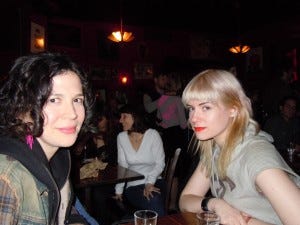
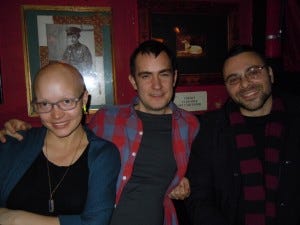
I was excited to hear Kate Zambreno twice in such a short time for the opportunity to compare venues. Something that occurred to me while Zambreno channeled her American ingenue protagonist Ruth, who stars in the novel Green Girl: the acoustics have a huge effect on the reception of a reading. I never thought this mattered in the readings scene, where many take place in bars and bookstores and I’m mostly focused on the sentences, but in the drastically smaller space of KGB made her reading more haunted, eerie and dream-like. She also read from a different section of her novel than at Franklin Park, a sex scene that was “porny and anti-porny,” where Ruth less-than-halfheartedly hooks up with a boy from a bar. “[Ruth] lets him do it even though it hurts, and she would rather be at home, reading fashion magazines.” Ruth’s desire is not only perfumed, but also performed. Zambreno unveils the masquerade that women like Ruth should desire to go home with the boy from the bar. My favorite bit: “‘You smell nice,’ he says. ‘It’s desire,’ Ruth says.”
KGB’s Sunday Night Fiction happens next on Sunday, 2/26, and for other events you can check the calendar here.
— Ryan Chang is from Orange County, CA and lives in Brooklyn. He is the Staff Writer for The Outlet, and his work has previously appeared in Thought Catalog. He is in the internet here and here.





